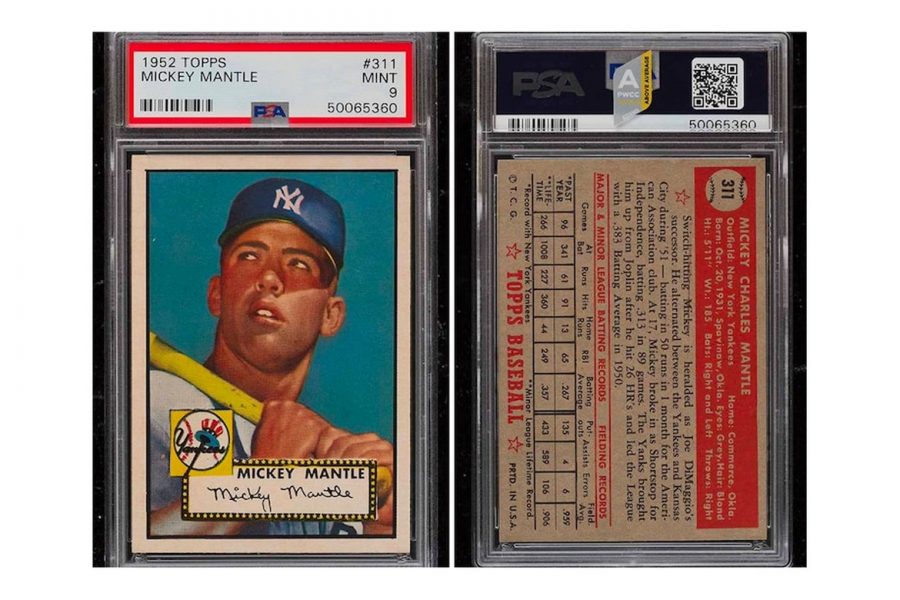Card craze
Analyzing the rise of collecting and reselling sports trading cards over the pandemic as well as advancements in the industry.
March 14, 2021
It’s crazy how a piece of cardboard gave me so much happiness.
Looking back at second grade, I remember I was envious of my friends in summer camp who spent countless hours tossing these shiny, colorful cards around. Pokémon was the name and trading these cards was the game. Until then I already owned a Pokémon game on my handy Nintendo DS, so I was familiar with some of the creatures on the cards. I begged my parents to get me a starter deck, and after bearing with my guilt-tripping self for a few hours, they finally gave in. Opening it up, I immediately tossed the rules away — I just stared, ecstatic with the cards I pulled. I couldn’t wait to show up the next day at camp and flex on all of my friends as the new Pokémon Don.
***
Now, nearly 10 years later, I’ve noticed the same craze I had for these Pokémon cards emerging again — with people craving the nostalgia of what trading cards offered.
In addition to Pokémon, sports organizations such as the NBA and MLB have their own trading cards, which are taking over the world. These 2 ½ by 3 ½ inch cards containing pictures of iconic people and creatures have been around since the second half of the 19th Century but only now are getting the attention they deserve. From being banned in some schools in 1999 to my summer camp temporarily not allowing them due to bartering that got out of hand, Pokémon cards are an example of an underrated nationwide phenomenon. Now, possibly fueled by boredom from the pandemic, newcomers have been trying to acquire and resell these ever-elusive commodities.
With this sudden influx of interest, the trading sports card market has exploded — I love to see it. Emily Kless, communications manager for Topps (a renowned sports collectible company), stated, “Sales numbers [for sports cards] are the best that they have been in the past decade.” Jason Howarth, Vice President of Panini America (another sports collectible company), said, “Big-box retailers such as Target and Walmart are experiencing three times [the sales] [of] what [they] would expect during a holiday shopping season.” The pandemic has made these sports cards just as popular as they were when I was in second grade — not only are they selling well, but they also have immense resale value.
Some cards have even proven bigger than stocks. Sports trading cards, especially those made by Topps and Panini America, have been booming, with some ROIs (Returns on Investment) even outperforming the S&P 500 according to CNBC.
$1.32 million. That’s how much a 2000 NFL trading card of a rookie Tom Brady sold for — and it wasn’t even in mint condition. Another Mickey Mantle for the books. Well, not exactly, as a 1952 Topps Mickey Mantle sold for a whopping $5.2 million this January, making it the highest selling sports card … ever.
However, with new advancements in block-chain technology, the sports trading card industry is being remolded with a digital treatment, to my indifference. A company called Dapper Labs is changing the way people collect NBA cards through their Top Shot lineup, involving video highlights, animations and a wide array of statistics per player — way more than a physical card can offer. These NFTs (Non-Fungible Tokens) have caught the attention of high-profile investors such as Dallas Mavericks owner Mark Cuban.
Despite being chock-full of new content, NFTs ultimately cannot replace the value that comes with purchasing physical cards. People like me chase after the nostalgia associated with collecting tangible cards, bringing me back to their childhood. Professional analysts have said that the outlandish prices of these Top Shot moments will plummet in time.Vice President Howarth said, “You put a pack in someone’s hand and it doesn’t matter whether you’re four years old or 40 years old. If you happen to find a player you love, or a team that you love, you’re ecstatic. That’s the power of the trading card, and the fact that people have been able to find that again and a piece of happiness and elation during this crazy time where you’re freaking out over everything, I’m glad this is a good distraction.” This simply cannot be applied to a digital card.
Physical cards from the past, whether sports or Pokémon, will generally go up in value, simply due to the fact they aren’t being produced anymore. The recent surge in crypto-sports cards, however, takes away from that ecstatic feeling of nostalgia. In the short run, they will see success, but they simply cannot outdo the feeling that comes with tearing open a foil pack of cards. Let’s just hope Pokémon doesn’t try the same.

















